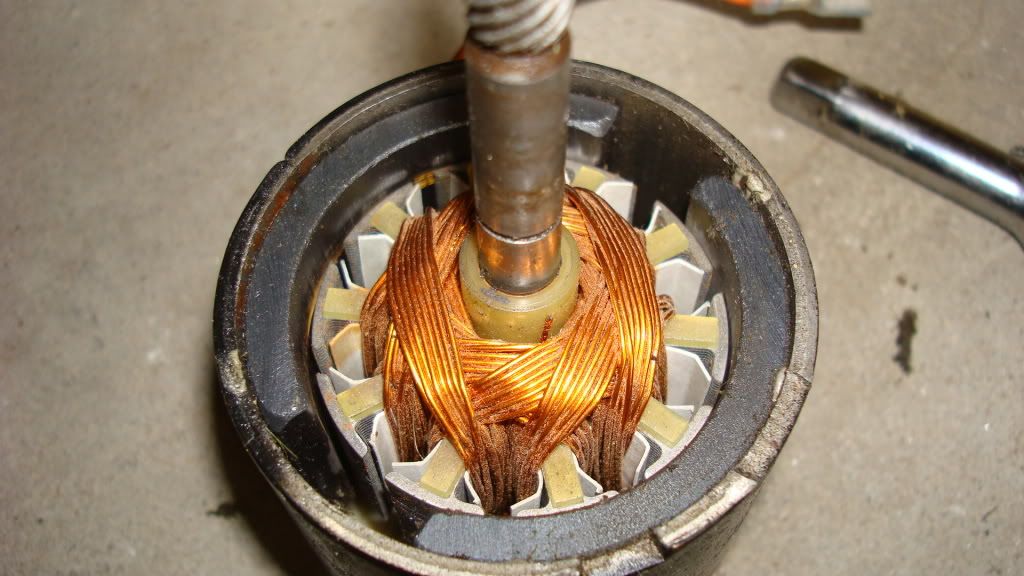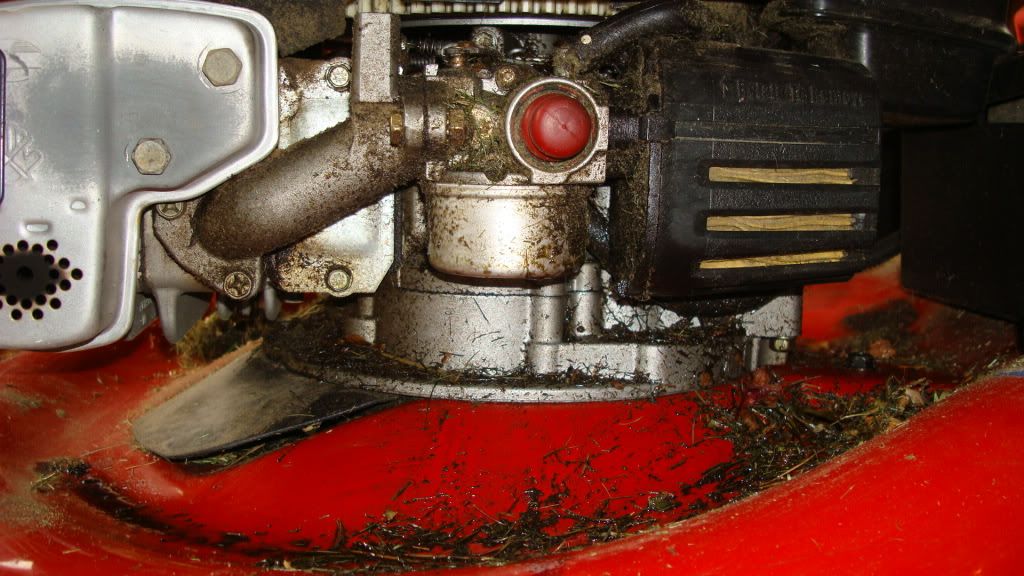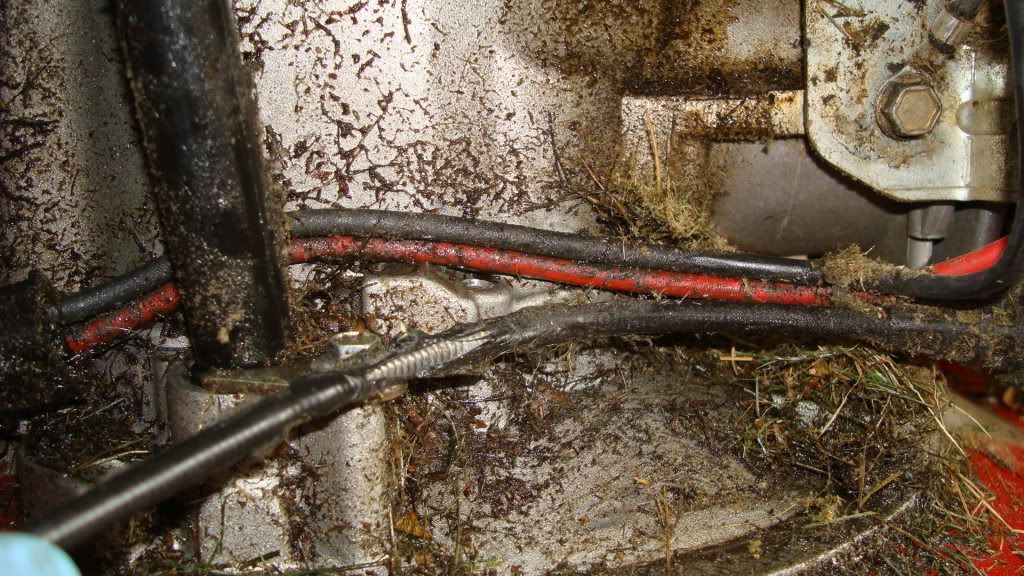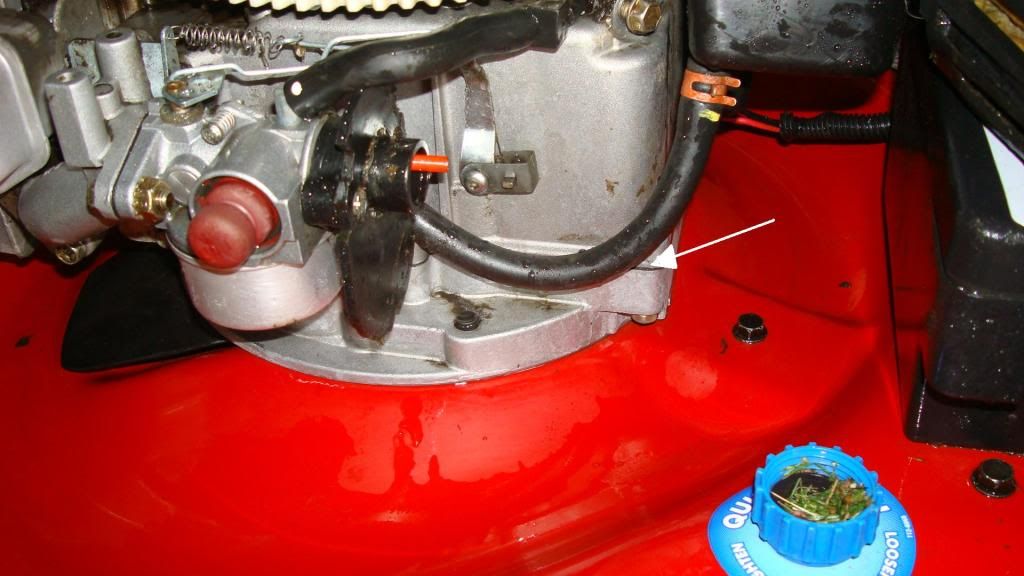If you're getting that much of a voltage drop with a NEW, charged battery
while bench testing the starter under no-load conditions, it sounds as if you've located the problem area-(starter, not battery). I'll bet that your old battery was/is still strong enough to start the engine-if the starter wasn't under-utilizing the energy that's getting to it.
A local independent shop here told me that their number 1 cause of starter-related problems in vertically mounted Briggs-type starters positioned BELOW the ring gear is that they slowly get clogged up with debris, due to the fact that dusty crud will work it's way into the starter and that almost no one seems willing to simply take the starter off and blow out the crud once in a while as a preventative measure-they wait until the engine gets hard to turn over. (This happened to me a few years after I got our first garden tractor with a self-starter. I took it apart, cleaned it out and relubed it.) From your description, yours would seem to be mounted above the ring gear..... In any case, if enough crud works it's way into the starter, it can compromise the effectiveness of the starter shaft's lubrication.
If your starter is requiring that much energy to turn (as shown by the voltage drop) and the starter drive gear is moving up, down or sideways back out of engagement while the starter is still spinning, that may just be a reflection of the starter's high internal resistance (caused by an actual electrical fault or by a physical reason-like insufficient lubrication to the starter motor's shaft ends) of the starter reducing the starter's drive rotational speed enough that it's insufficient to maintain the speed necessary to maintain the (usually) centrifical-weight driven starter drive in engagement.
My suggestion, if you have the inclination, is to first attempt to get SOME lubrication onto at least one end of the starter's shaft before taking the starter apart. A light weight oil or even squirt of WD40 aimed towards the shaft ends will work as lubrication
TEMPORARILY. OBVIOUSLY try lubing the externally accessible end first.
I and others have no hesitation to dissasemble a starter, but many people will not attempt to take a starter apart. If you're one of those you can (usually) back off the through bolt nuts ONLY a couple of turns and then work a thin blade into the space next to the sheetmetal cover of the starter to get enough access to somewhat effectively blow out the starter with an airblast from an air compressor or to spray a light lube TOWARDS the shaft end-without getting the brushes out of position, which would require dissasembly of that end of the starter to reposition. (A more effective way to attempt to lube the hidden shaft end is to drill a tiny hole in the end cap, but that hole will have to be sealed up later, and drilling it could potentially damage the bearing.... )
If, after the oil treatment, it spins more easily (with much less of a voltage drop), the problem is liable to be simple, CURABLE lack of lubrication. (But someone wil have to take the starter apart to do a decent job of relubing it.) If the temporary lub attempt doesn't make much of a difference, then it's possible that the starter's (usually) oil-impregnated bushings or bearings are so dried out that they may have actually worn enough to be allowing the starter shaft to be off center. To test for that possibility, try repositioning the starter in a vise and try it in various positions-it will likely spin faster one one position than in another. If so, then it's probably time to look for a replacement starter.
For reference, I'm still on the original a starter 14 years in using our rider
at least 9 months a year, although I've replaced the plastic starter drive gear 3 times. I'm on the 3rd battery now, but the second one I pulled on general maintenance principles last year to use as a spare while it was still able to start the 17.5hp engine. On that note, I recommend that people ALWAYS get the biggest amperage commonly available battery that will fit in your machine (car/truck/tractor etc.) the cost difference is usually not very much and frequently even an older but weakened higher capacity battery will have sufficient capacity remaining to start an engine long after a similarly weakened but lower capacity one.
Also it's not a great idea to keep your battery on a cheap but "dumb" trickle charger endlessly, especially over a long off-season (a dumb charger is one that puts out a steady voltage no matter how long it is attached, without tapering the charge as the battery gets more fully charged). Most dunb chargers will be maintaining the battery in a slightly OVERcharged condition, which definitely lessens it's effective life. A "smart" charger tapers or stops the charging completely when the battery is fully charged.
Thanks for all the suggestions guys; here's the latest:
Pulled off starter and connected it directly the the battery via jumper cables.; it spins/runs fine. While testing this way I had a voltage drop from 13.5 to 8.
Next I put the starter back on the mower (under load?) and again connected the starter directly to the battery via jumper cables. Again a voltage drop from 13.5 to 8 while the engine is "turning over".
The mower will barely start most of the time, but it just sounds so weak trying to start. I also noticed that when the starter is installed and the key is turned, the starter gear drops down into the flywheel (?) to start the engine, but sometimes it will spring back up and keep spinning (in mid-air; not engaged) even though the engine didn't start.
Thoughts?
 different machines. this is really worth, $40.
different machines. this is really worth, $40.



